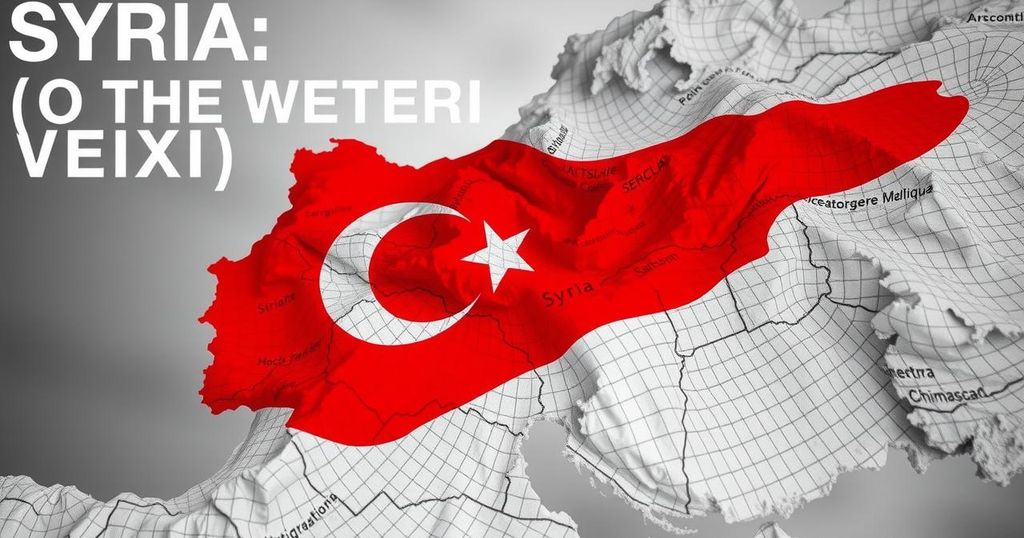Turkey has emerged as the leading foreign player in Syria following the collapse of Assad’s regime, sidelining Iran and Russia. This shift in influence reflects long-standing rivalries and a strategic realignment of interests in the region. The implications may extend beyond Syria, affecting the South Caucasus and Kurdish autonomy, stressing the fluid nature of Turkey-Iran relations despite increased competition.
Following the collapse of Bashar al-Assad’s regime, Turkey has emerged as the principal foreign influence in Syria, diminishing Iran and Russia’s roles. Historically, Turkey and Iran have contended for power, especially in the South Caucasus, and their rivalry has now escalated to include the Levant. Analysts note that while Iran has raised concerns about Turkey’s expanding influence, especially after losing its ally in the region, this shift does not necessarily indicate a dramatic downturn in overall Turkey-Iran relations.
The Syrian civil war, which began in 2011, saw Iran and Russia support Assad, while Turkey favored opposition factions. Iran’s strategic interest in preserving Assad’s government stemmed from its intent to use Syria to support groups like Hezbollah. Conversely, Turkey sought a government in Syria aligned with its policies, particularly those aimed at limiting Kurdish autonomy, as evidenced by the presence of the U.S.-backed Syrian Democratic Forces (SDF).
Turkey’s primary objectives in Syria have been to combat the Kurdish groups, facilitate the repatriation of Syrian refugees, and prevent further refugee influxes into Turkey. With the regime change and stabilization under factions linked to Turkey, the humanitarian crisis has abated, yet concerns regarding Kurdish influence remain potent. Turkey’s growing power could enhance its maritime position in the Mediterranean through potential agreements with new Syrian authorities.
The implications of Turkey’s growing dominance over Iran may extend to regional dynamics, particularly in the South Caucasus, where various powers vie for influence. Despite the apparent decline of the Astana talks, which aimed to mediate the Syrian conflict, there exists a possibility for continued collaboration among Turkey, Iran, and Russia to manage their divergent interests. Some analysts suggest that alignment may still occur, particularly against common adversaries like Israel, which has increased its operations in Syria.
Nevertheless, Iran is expected to persist in efforts to regain influence in Syria, employing tactics to counter Turkey’s position within its network of regional allies. Furthermore, the current state of U.S. support for Kurdish forces complicates matters, especially following the withdrawal of many troops. Analysts assert that the Kurdish population’s future hinges significantly on the emerging relationships between the Syrian regime and Ankara.
This article analyzes the evolving geopolitical landscape following the fall of the Assad regime in Syria, emphasizing Turkey’s rise as a dominant foreign player, particularly at Iran’s expense. With historical tensions between Turkey and Iran in the South Caucasus now extending to Syria, the article provides insight into each country’s strategic interests and objectives in the region. It discusses the potential implications of Turkey’s growing influence, particularly concerning the Kurdish populations supported by the U.S. and the dynamics surrounding the Syrian government under its new authority.
In conclusion, Turkey’s ascent as the major foreign power in Syria post-Assad’s downfall marks a significant shift in regional dynamics, highlighting the diminishing role of Iran and posing new challenges for the Kurdish communities. While Turkey appears to strengthen its position, the interplay of alliances and rivalries, particularly with Iran, remains complex and fluid. The developments in Syria will inevitably have repercussions for broader geopolitical relations both within the region and beyond.
Original Source: www.eurasiareview.com






